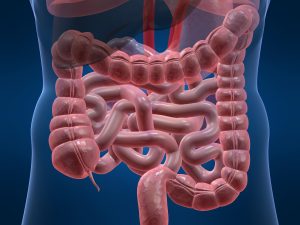
Leaky Gut, Chronic Disease, & Long Term Health
Leaky Gut This blog discusses the very important health issue of leaky gut. You will learn: What is the gut & the gut microbiome What
If you are a doctor or clinician looking to make a bigger impact on the world, have more job satisfaction and have up-to-date protocols and treatment solutions for your patients, check out our free functional medicine training led by functional medicine expert, Dr. Miles Nichols below.
Plus additional BONUS training videos on treating tough cases of brain fog and cognitive impairment!!
The mitochondria are the powerhouse of the cell. This basically means the mitochondria are responsible for producing the energy that the cell needs in order to function. In order for any cell in our body to perform at its best, we need our mitochondria to function. In this article, you will learn about a peptide that can help improve your mitochondrial function, allowing cells all over the body to have the energy they need to do their job.
** Please note: If you want the short summary version of this article, then please click here **
We have recently written many blogs about peptides. To recap, a peptide is a small protein, made up of a chain of amino acids. They can be used therapeutically to help with different health conditions. Click on the links to see our articles on peptide therapy, HGH, CJC 1295/Ipamorelin, BPC 157, PT 141, Ta1, VIP, Thymosin Beta 4, KPV and Trio.
SS-31 Improves Mitochondrial Function
But first, what are Mitochondria?
Mitochondria are often referred to as the ‘battery’ or ‘powerhouse’ of the cell. They provide the source of energy for our cells. This cellular energy, or ATP (adenosine triphosphate), is created in the mitochondria. This process takes energy from the breakdown of food molecules and converts it into ATP, which is used to fuel cellular processes. ATP powers all processes in our cells, such as muscle contraction, nerve impulses, breathing and even maintaining a heartbeat! We wrote about ATP in the context of sports nutrition in this article here.
When making cellular energy, mitochondria also make reactive oxygen species (ROS) (Zhao W, 2019). ROS are free radicals which cause oxidative damage. Mitochondrial ROS can activate apoptosis (programmed cell death) and inflammation (Zhao W, 2019). This oxidative damage and mitochondrial dysfunction are root causes of some diseases such as neurodegenerative diseases (dementia, Alzheimer’s, Parkinson’s), diabetes, heart disease, stroke, kidney disease, cancer, other degenerative diseases due to aging and aging in general (Zhao W, 2019).
Any way to reduce mitochondrial oxidative stress and repair mitochondrial function is a potential treatment for any of these diseases (Chavez JD, 2020).
And this is where SS-31 comes in……
What is SS-31?
SS-31 is a peptide. It is a small cell-permeable antioxidant peptide that targets the inner mitochondrial membrane and concentrates in mitochondria (Escribano-Lopez I, 2018).
SS-31 can increase ATP and reduce ROS in the mitochondria (Zhao W, 2019). It can protect cells from oxidative stress by scavenging ROS and reducing mitochondrial ROS production (Escribano-Lopez I, 2018). This improves mitochondrial function and better supports mitochondrial ATP energy production (Escribano-Lopez I, 2018).
Specifically, SS-31 can be used for:
It is currently in clinical trials for the treatment of heart failure and various mitochondrial diseases (Chavez JD, 2020).
What does the Research say & How can we use SS-31?
Eye Health
Retinal disorders such as AMD (age-related macular degeneration) and retinitis pigmentosa (a condition of the breakdown and loss of retinal cells) can be related to oxidative damage in the retina. Oxidative stress can lead to mitochondrial dysfunction in retinal cells, causing retinal cell apoptosis, i.e., death of cells (Chen M, 2017).
Glaucoma is the second leading cause of irreversible blindness (Wu X, 2019). Progressive loss of retinal cells in glaucoma gradually results in loss of vision. Mitochondrial dysfunction and oxidative stress are factors contributing to glaucoma and retinal cell death (Wu X, 2019).
As the mitochondria peptide, SS-31 has a protective effect against oxidative damage (Chen M, 2017). It reduces retinal cell death by inhibiting retinal cell apoptosis (Wu X, 2019). It does this by activating retinal proteins and enhancing antioxidative enzyme activity (Wu X, 2019). This lessens the mitochondrial dysfunction in these cells and makes SS-31 a possible treatment for glaucoma and age‑associated retinal diseases (Chen M, 2017). SS-31 also has a neuroprotective effect in the retina against diabetes-induced retinal degeneration (Wu X, 2019).
Type 2 Diabetes
Type 2 diabetes is associated with increased production of reactive oxygen species (ROS), oxidative stress, mitochondrial dysfunction and inflammation (Escribano-Lopez I, 2018).
SS31 repairs the negative changes in oxidative stress, mitochondria function and levels of inflammatory molecules (Escribano-Lopez I, 2018). In the white blood cells of the immune system of T2D patients, SS-31 can reduce oxidative stress, pro-inflammatory signalling and proinflammatory cytokine levels (Escribano-Lopez I, 2018). SS-31 is a potential treatment for diabetes and cardiometabolic disorders (Escribano-Lopez I, 2018).
Cardiovascular Health
SS-31 can help with cardiovascular health. The cardiovascular system involves the inflammatory signaling cascade, which is closely related to ROS production. As we have seen, SS-31 can reduce ROS and inflammation (Escribano-Lopez I, 2018).
One study looked at mice with cardiomyopathy, where the heart walls thicken and prevent blood from flowing through the heart. SS-31 was able to improve cardiac hypertrophy (thickening of the heart muscle), diastolic dysfunction (“stiffening” of the heart’s ventricles or pumping chambers) and the formation of scar tissue, which in excess can become pathological (Escribano-Lopez I, 2018).
In addition, SS-31 can prevent the conversion of macrophages to foam cells (Escribano-Lopez I, 2018). Foam cells are involved in atherogenesis, or the formation of fatty deposits in the arteries.
Kidney Disease
In chronic kidney disease, the mitochondria in kidney cells are small and rounded, indicative of mitochondrial damage. SS-31 restored normal mitochondrial structure in kidney cells and suppressed further mitochondrial damage (Szeto HH, 2018).
Renal ischemia is the deficiency of blood in one or both kidneys, usually due to constriction or obstruction of a blood vessel. Treatment with SS-31 accelerated ATP recovery upon reperfusion, the restoration of blood flow to an organ or tissue after having been blocked. In mice, treatment with SS-31 one month after acute injury repaired mitochondria in kidney cells and restored their cellular structure (Szeto HH, 2018).
SS-31 can promote healing of damaged tissues. Treatment with SS-31 in acute renal ischemia significantly accelerated the rate of kidney cell regeneration. SS-31 can promote normal healing of injured tissues and improve scar tissue changes in kidneys and hearts (Szeto HH, 2018).
Cognitive Function & Neuroinflammation
As we have seen, SS-31 can eliminate ROS and increase ATP in mitochondria (Zhao W, 2019). SS-31 can be neuroprotective in neurodegenerative disorders, including amyotrophic lateral sclerosis (ALS) and Alzheimer’s disease (Wu X, 2019). In animal research, SS31 is currently being used to protect against neurodegenerative and inflammatory diseases (Zhao W, 2019).
In mice with TBI (traumatic brain injury), SS-31 improves the mitochondrial function and provides neuroprotection through mitochondrial biogenesis (Zhu Y, 2018). It provides neuroprotection after TBI by scavenging ROS from the mitochondria, thus improving mitochondrial function (Zhu Y, 2018).
In another study, LPS, an endotoxin, is a major bacterium that activates the immune response. It can induce hippocampal oxidative stress, a neuroinflammatory response, neuronal death via apoptosis and ultimately impair memory (Zhao W, 2019).
SS-31 significantly improved this LPS-induced memory impairment in mice. It protected the hippocampus against LPS-induced mitochondrial dysfunction and significantly improved mitochondrial function (Zhao W, 2019).
The protective effects on memory impairment relate to its antioxidant properties targeting the mitochondria (Zhao W, 2019). It can also facilitate BDNF signaling in the brain (Zhao W, 2019). BDNF is a protein that promotes the survival of nerve cells (neurons) in the brain.
SS-31 also increases the function of synapses in the mouse brain hippocampus (Zhao W, 2019). A synapse allows a signal to pass from one neuron to the next. Synapses are key to the brain’s function, especially in relation to memory.
In animal studies, SS-31 can protect neurons from degeneration in Alzheimer’s disease, Parkinson’s disease, ALS, MS and Friedreich ataxia (Zhao W, 2019). All of these conditions involve inflammatory and oxidative stress processes, which is where SS-31 can help (Zhao W, 2019).
SS-31’s ability to prevent the oxidative damage and neuroinflammation which contributes to memory impairment makes it a potential treatment for neuroinflammation-related cognitive impairment (Zhao W, 2019).
Anti-Aging
We have talked about anti-aging in relation to peptides in previous articles. SS-31 is no different from other peptides in that it has potential anti-aging effects. Clinical trials with SS-31 have shown promising results in age-related conditions including heart failure, muscle weakness, chronic kidney disease and age-related macular degeneration (Szeto HH, 2018).
A single treatment of SS-31 in older mice reversed the decline in mitochondrial function (Szeto HH, 2018). SS-31 is quickly taken up by skeletal muscles and ATP production levels returned to those seen in much younger mice within just one hour of SS-31 treatment (Szeto HH, 2018). The improvement in ATP is associated with improved fatigue resistance (Szeto HH, 2018).
In another study on mice, leg muscles in the older mice given SS-31 became stronger and less fatigued, with significantly greater mass compared to older mice not given SS-31 (Campbell MD, 2019). This led to a significant increase in treadmill endurance compared to controls not given SS-31 (Campbell MD, 2019).
In older people, sarcopenia and exercise intolerance are major contributors to reduced quality of life. A recent clinical study confirmed that SS-31 significantly increased maximum ATP production in the skeletal muscle of healthy elderly adults (Szeto HH, 2018). The increase in ATP production achieved with one dose of SS-31 is comparable to that achieved with 6 months of endurance training (Szeto HH, 2018). SS-31 may provide a way to quickly improve exercise performance in the elderly by increasing mitochondrial function to maximize ATP production (Szeto HH, 2018).
Are there any Side Effects?
SS-31 is well tolerated (Thompson WR, 2020). The side effects are mainly reactions to the injection and these are mostly mild (Thompson WR, 2020).
There is always the chance of potential interactions with other medications a person may be taking. It is very important to work with an experienced Functional Medicine practitioner when taking peptides. Our clinic has extensive experience with peptides and can help you.
** Please stay tuned for our next blog on more Peptide Therapy! **
Does your current health situation look like this…
We specialize in finding answers and solutions for complicated chronic illness when people feel like they have tried everything. If this sounds like you, book a free call with us to see if we are the right fit for your health goals.








Leaky Gut This blog discusses the very important health issue of leaky gut. You will learn: What is the gut & the gut microbiome What

Research on Alzheimer’s disease is continuously looking for what causes the disease and how to better treat Alzheimer’s. A relatively new finding suggests that Alzheimer’s

In this blog, we will look at Lyme Disease and answer the question ‘How does Lyme Disease become chronic?’ You will learn: What Lyme Disease

In this blog, we will look at the causes of Bartonella. You will learn: What Bartonella is and how it compares to Lyme Disease What

In this blog, we will look at the many symptoms of Bartonella. You will learn: What Bartonella is and what causes it What are the

In this blog, we will look at Bartonella. You will learn: What Bartonella is and how it compares to Lyme Disease How Bartonella is spread

In this blog, we will look at Lyme Disease and answer the question ‘Is Lyme Disease curable?’ You will learn: What Lyme Disease is How

In this blog, we will look at Lyme Disease and the growing threat that it has become. You will learn: What Lyme Disease is How

In this blog, we will look at Lyme Disease and mental health. You will learn: How and why Lyme Disease can affect mental health How

In this blog, we will look at cognitive impairment & Alzheimer’s Disease in relation to various lifestyle factors. You will learn: How lifestyle can affect

Alpha Gal Syndrome Today’s article outlines a condition that is thought to affect, conservatively, 3% of the US population. However, there may be many undiagnosed

Can Lyme Disease Cause Joint Pain? In this blog, we will look at Lyme Disease and joint pain. You will learn: How & why Lyme
There was a problem reporting this post.
Please confirm you want to block this member.
You will no longer be able to:
Please allow a few minutes for this process to complete.

